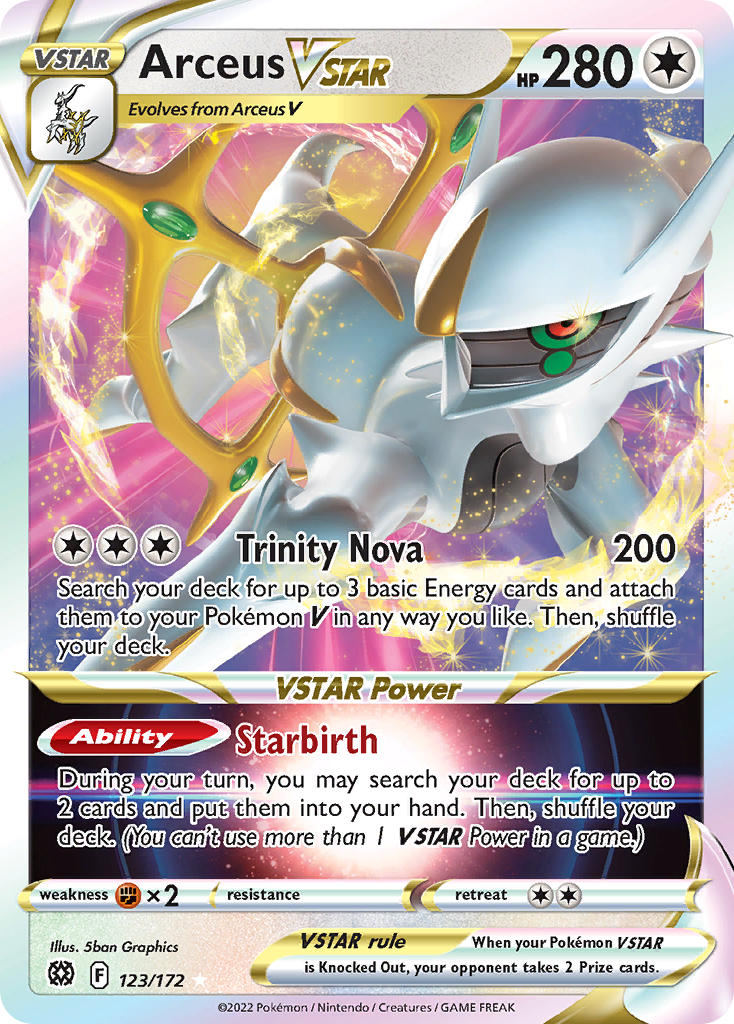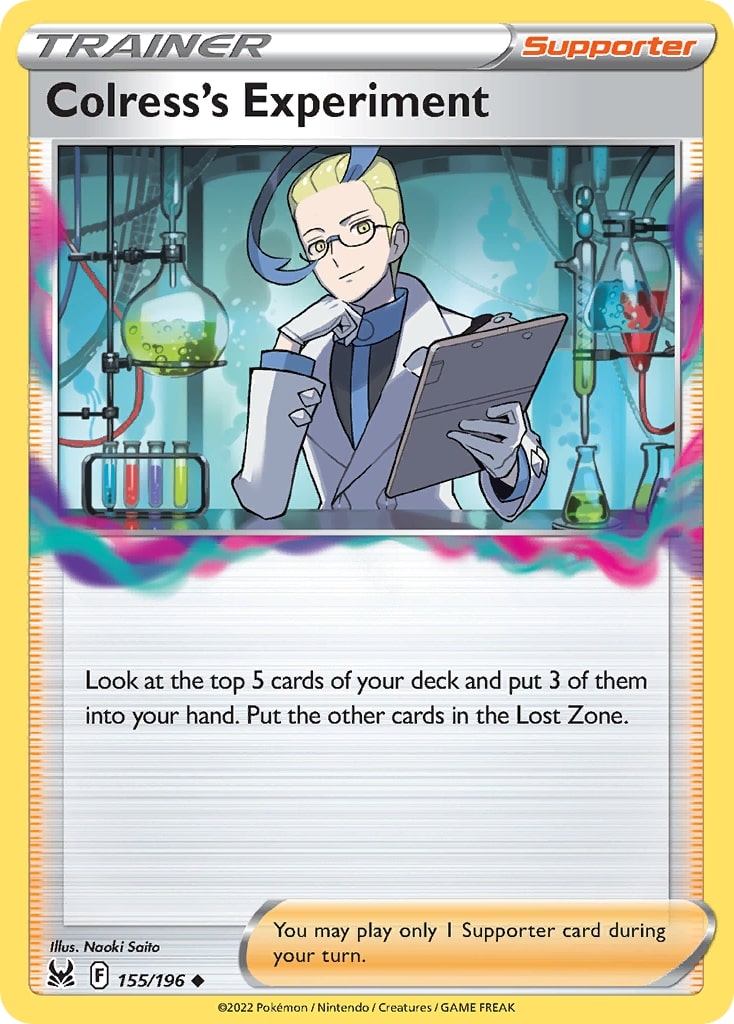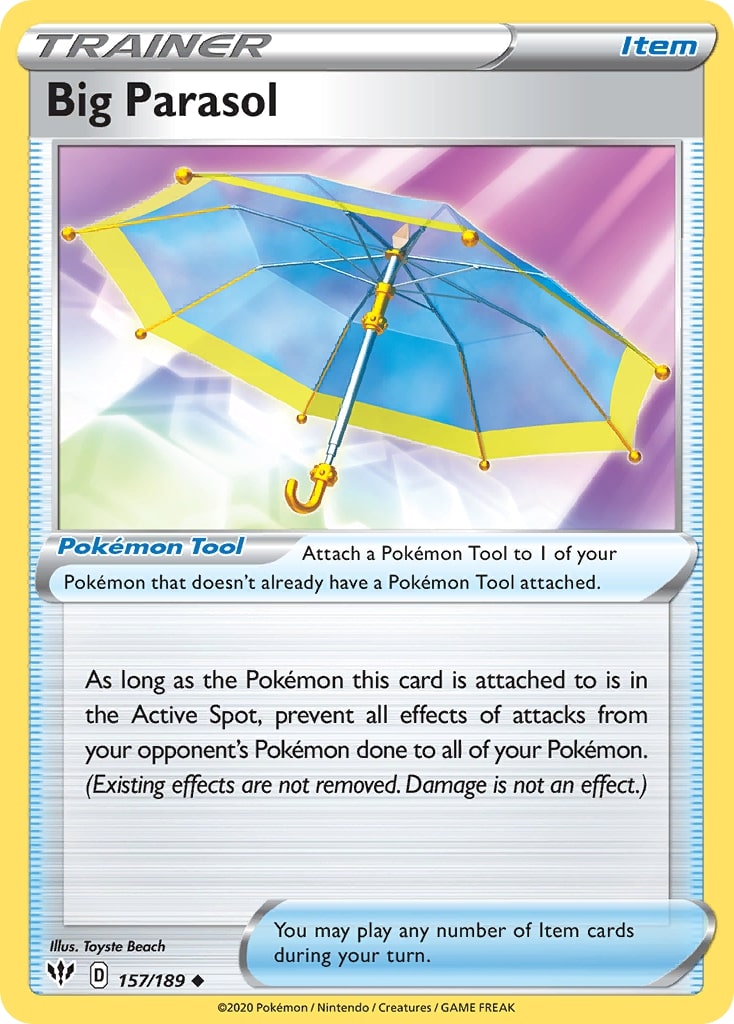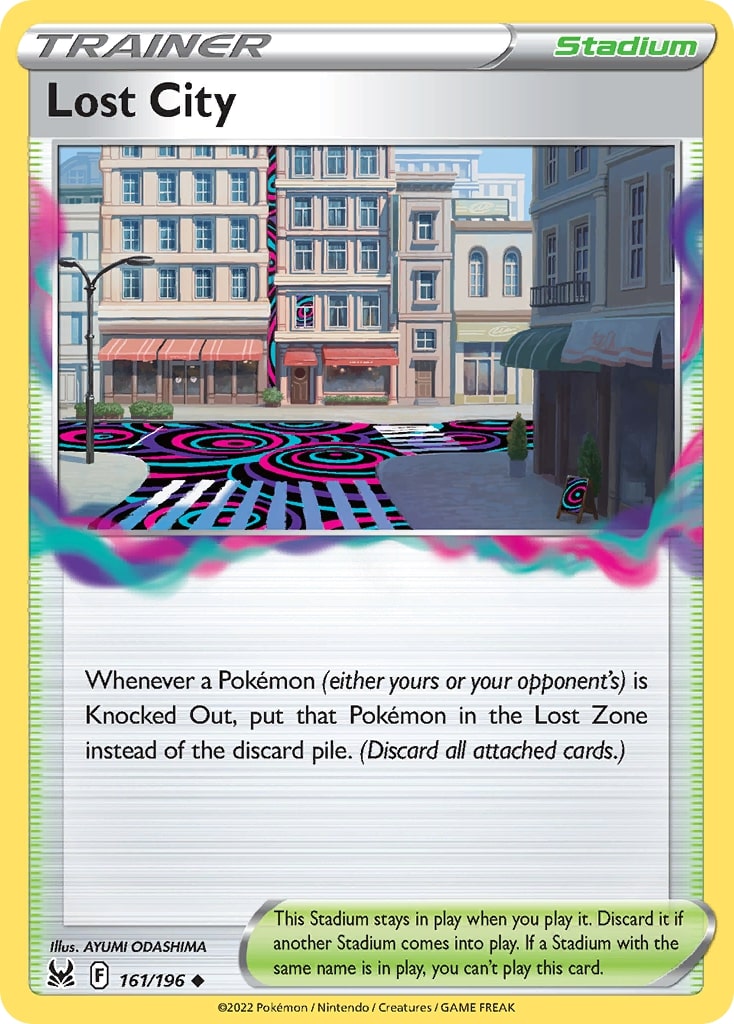Hello again! In my last article, I wrote about the many gameplans and tricks behind Palkia VSTAR / Inteleon. Today, I’m going to tackle a very different deck: Arceus VSTAR / Duraludon VMAX, aka Arceus / Duraludon or ArcDura. In many ways, it’s the complete opposite of Palkia: a simple deck, which plays basically the same way no matter what it’s up against, with only a few Pokémon. Like Palkia, it’s been around for a while (the deck appeared in Brilliant Stars, upon Arceus VSTAR’s release), but unlike Palkia, Arceus / Duraludon has not changed much in all that time.
Deck Strategy
If you’re not familiar with the deck, the strategy is simple. Use Arceus VSTAR’s Starbirth and Trinity Nova to set up and power up two Duraludon VMAX, then attack with Duraludon VMAX. With no other Pokémon on the board, your opponent will have to power through one Arceus VSTAR, then two Duraludon VMAX, in order to win the game, while you can use powerful attacks every turn. Duraludon VMAX’s Skyscraper Ability also gives it immunity against Pokémon with Special Energy, while its attack ignores effects such as Miltank’s Ability and Hisuian Goodra VSTAR’s Rolling Iron damage reduction.
Its status as a simple, linear deck has earned Arceus / Duraludon some mockery from experienced players in the past: despite its solid presence in Japan, many players looked down on it, and even those who felt it was better than its reputation suggested, like myself, would still not dare play it at a Regionals. This has changed somewhat this season, as Arceus / Duraludon now has a few top 8s to its name. (One of them is due to me! In the Astral Radiance, I finally pulled the trigger on playing Arceus / Duraludon since it felt like a good call, and got top 2 at the Bilbao Special Event thanks to it.)
More importantly, though, the fact that it’s a simple, but competitive deck (and also reasonably cheap!) also makes it a great deck for new players, or casual players looking to enter the competitive scene. Arceus / Duraludon is the deck I lend to new or returning players who need something simple to start out with, and the deck I recommend to those who don’t have the time or the opportunity to master a complicated deck, but still have competitive hopes. My friend Cédric Paporello picked up the deck this season at my recommandation, and was able to get his first day 2 last month at Liverpool Regionals with it!
That’s why, if you’re a newer player, I recommend you try out Arceus / Duraludon if you want to learn a deck that can bring you success even if you’re not up to date with all the complexities of the metagame. The basic game plan is the same every game. And for more details and matchup-specific tips, this article is here to tell you all you need to know.
Decklist
Pokémon – 11
| 4 Arceus V BRS 122 |
| 2 Arceus VSTAR BRS 123 |
| 3 Duraludon VMAX EVS 123 |
| 2 Duraludon V CPA 047 |
Trainer Cards – 36
| 1 Pokégear3.0 HS 096 |
| 2 Hyper Potion SSH 166 |
| 1 Training Court RCL 169 |
| 4 Boss’s Orders RCL 154 |
| 2 Switch SUM 132 |
| 3 Quick Ball SSH 179 |
| 1 Raihan EVS 152 |
| 3 Lost City LOR 161 |
| 2 Big Parasol DAA 157 |
| 4 Ultra Ball BRS 150 |
| 1 Single Strike Style Mustard BST 134 |
| 1 Choice Belt BRS 135 |
| 4 Colress’s Experiment LOR 155 |
| 3 Marnie SSH 169 |
| 4 Trekking Shoes ASR 156 |
Energy – 13
| 3 Fighting Energy SMEnergy 006 |
| 4 Double Turbo Energy BRS 151 |
| 6 Metal Energy SWSHEnergy 008 |
Arceus / Duraludon decklists vary very little. My own decklist, pictured here, has some small deviations from the norm, but nothing spicy!
As I mentioned, the core idea of the deck is to only use three Pokémon over the course of the game (one Arceus and two Duraludon, but in some cases two Arceus and one Duraludon) so that the opponent has to KO them. Avoid benching any more Pokémon, which could be easy targets for your opponent’s Boss’s Orders.
It’s optimal to play four Arceus V and two Duraludon V because starting Arceus V is much, much better than starting Duraludon V, since we want to use Trinity Nova on turn 2, and Arceus V’s Trinity Charge on turn 1 when going second.
The reason between the strange 2-3 Duraludon VMAX line is Single Strike Mustard, which can be used to bring a Duraludon VMAX in play directly from the deck. It’s not always easy to do so, but thanks to Starbirth, it’s much easier to find it and also to discard your hand, for example by searching out an Ultra Ball.
The deck’s main draw Supporter has shifted from Professor’s Research to Colress’s Experiment ever since its release in Lost Origin. Colress’s Experiment helps us find cards we need, such as the Double Turbo Energy + Hyper Potion combination, and throw away useless ones, such as any leftover Pokémon or Ball cards once we’re set up. Professor’s Research has the downside of making you discard important resources, like Boss’s Orders. Moreover, if you discard Basic Pokémon, they can be brought back to your Bench with an Echoing Horn, which can give the opponent an easier way to take six Prizes.
Raihan is situational, but thanks to Starbirth, we can find it when needed, and it’s typically used if our only Pokémon with an Energy was KO’d after our first turn, as we can accelerate an Energy and still attack on turn 2.
Big Parasol and four Boss’s Orders are your best bet against Lugia VSTAR. Thanks to Duraludon VMAX’s Ability, the only Pokémon that can hit you in a typical Lugia list is Yveltal, whose Amazing Destruction attack will simply KO you. Big Parasol can protect Duraludon VMAX from this attack, but of course, it’s not reliable, because the Lugia player can simply play Lost Vacuum to remove it.
That’s where Boss’s Orders comes in. If Yveltal is in play, we can simply KO it before the opponent finds a Lost Vacuum to attack. If Yveltal stays out of play (as usually happens), we can instead KO an Archeops, which prevents the Lugia player from powering up Yveltal in one turn. Then, when they play it, we can Boss it and then take a KO.
Choice Belt, on the other hand, is a more aggressive tool. I find it great for several reasons. First, it can let Arceus VSTAR take occasional KOs with Trinity Nova. Second, it’s a way to OHKO Dragonite V, which is played in Lost Box partly for this matchup. Finally, it can also let you KO an Eldegoss V with a Cape of Toughness, breaking the loop used in some Control builds.
Duraludon VMAX needs Stadiums, mostly to counter Path to the Peak, and there are several choices. Right now, I think Lost City is the best one. It is mainly used in the Regigigas matchup: once you’ve Lost Zoned two copies of the same Pokémon, the opponent can’t fill their Bench anymore, and they can’t use Regigigas’s Ability, leaving you free to finish the game. Also, when your own Pokémon are Knocked Out with Lost City in play, they can’t be targeted with Echoing Horn, which helps against some decks (mostly Mew). Training Court is also added for some additional Energy. Other choices for Stadium spots include Collapsed Stadium and Tower of Darkness, as well as Temple of Sinnoh as a one-of (as additional protection against Yveltal).
Most players opt for three or four Pokégear to help them find key Supporters (especially Boss’s Orders). I’ve taken a different approach and opted for Trekking Shoes. In my opinion, this card gives ArcDura the little bit of control over its draws that it lacks. Trekking Shoes also helps thin your deck and keep only good cards; it’s not as good as Pokégear to draw into Boss’s Orders, but it can also be played to help find an Arceus V or a Double Turbo Energy on the first turn.
Tips
Let’s talk about some things to keep in mind when playing.
First, I should detail a little bit how the Lugia / Archeops matchup goes. Lugia VSTAR can easily KO Arceus VSTAR using some Powerful Energy, but it can’t touch Duraludon VMAX (barring the rare cases of lists with Path to the Peak or Cancelling Cologne). As long as you can set up a Duraludon VMAX, either with Trinity Charge or Trinity Nova, you can then start attacking for 220 damage every turn. Put a Big Parasol on Duraludon VMAX as soon as you can, and start powering up a second one.
Your goal is to KO Yveltal, and failing that, Archeops. Assume that your Arceus VSTAR will be KO’d as soon as your opponent uses their VSTAR Power. This means that even if you don’t need to use Starbirth, you probably should do it anyway. If you’re not sure what to take, Boss’s Orders is generally a good play, as you might need to use multiple in a row. For example, if you KO an Archeops and your opponent then benches Yveltal and starts powering it up, you need a second Boss in hand for the KO.
Remember that Yveltal is the threat and Lugia VSTAR doesn’t matter once Arceus is KO’d. So for example, if your opponent fills their Bench and have no space for Yveltal, you don’t have to take KOs on the Active Pokémon. You can simply wait until you get a Boss’s Orders and KO Archeops to make Yveltal less of a threat (or until they free space on the Bench by using Lumineon V’s Aqua Return). Similarly, there’s no point in using a Boss’s Orders on a damaged Lugia VSTAR to finish it off; keep it for more relevant targets.
Then, I want to discuss some specific threats to Arceus/Duraludon’s game plan. The first is Path to the Peak, especially in decks that rely on Special Energy: Mew VMAX, and Regigigas. Against these decks, it is imperative to not throw away your Stadiums. Mew is a difficult matchup because of Path to the Peak and Echoing Horn: the Mew deck will usually win the Prize race by going for easy KOs, but Arceus/Duraludon has a shot. Even when you can’t remove their Stadium, using Marnie under Path to the Peak might give Mew a bad hand and make them miss an attack.
Another card to be aware of is Sky Seal Stone. This card can be played in Lost Zone Toolbox decks, and allow them to take an extra Pokémon off a KO on a VMAX or VSTAR Pokémon. This is a huge problem for Arceus/Duraludon. Usually, the deck’s game plan is to force the opponent to KO an Arceus VSTAR, then two Duraludon VMAX. This way, in order to win the game, the opponent needs to, effectively, take eight Prize cards. However, with Sky Seal Stone’s effect, they can just KO an Arceus VSTAR and a Duraludon VMAX (as long as they have a Pokémon V, such as Dragonite V), making the game much easier to win for them. Since Azul Garcia Griego just won the Oceania International Championships with a Lost Zone Toolbox deck featuring Sky Seal Stone, you should definitely expect to face this kind of deck, whether it’s in IRL tournaments or online.
There is no perfect card to counter Sky Seal Stone. Even Tool Jammer wouldn’t be useful, since the opponent can just activate Sky Seal Stone’s VSTAR Power when the Pokémon is on the Bench. Instead, you should adapt your game plan. Instead of an Arceus VSTAR and two Duraludon VMAX, use two Arceus VSTAR then a Duraludon VMAX. You’ll still OHKO everything in the opponent’s deck (including Dragonite V, if you put a Choice Belt on an Arceus VSTAR without a Double Turbo Energy), but they won’t be able to win without taking three KOs. Be careful that they don’t KO your Duraludon VMAX before they’ve had to deal with two Arceus VSTAR; you can keep Duraludon V unevolved for some time so they aren’t tempted to bring it Active with Escape Rope and Boss’s Orders. Also, with Big Parasol on your Active Pokémon, all your Pokémon will be safe from Sableye’s Lost Mine.
Lastly, against Vikavolt V, remember not to Bench a Duraludon unless you can charge them up with Trinity Nova or Trinity Charge in the same turn! Due to its high retreat cost, it would be an easy target for the opponent to bring up and KO slowly while Item locking you. Vikavolt tends to play Path to the Peak these days, so Duraludon V’s Hard Coat, or Duraludon VMAX’s Skyscraper, might not helpful. Also, keep in mind that Vikavolt is another deck that can use Sky Seal Stone, which justifies using two Arceus and one Duraludon, just like against Lost Zone Toolbox.
Conclusion
Thank you for reading! I know rotation is approaching soon, and some of you are probably waiting for me to talk about the post-rotation format, and rest assured that I will be doing that soon enough! However, I felt like an introduction to an easy deck to pick up was probably warranted since plenty of my readers are not long-time players. Also, Arceus/Duraludon is, at least at first glance, still playable post-rotation, though maybe not as good. Plenty of the tips above will not be relevant after rotation strikes, but hopefully the general idea stays similar enough that this article is still readable in a few months!
In any case, Don’t hesitate to leave a comment if you have any questions.
Stéphane





